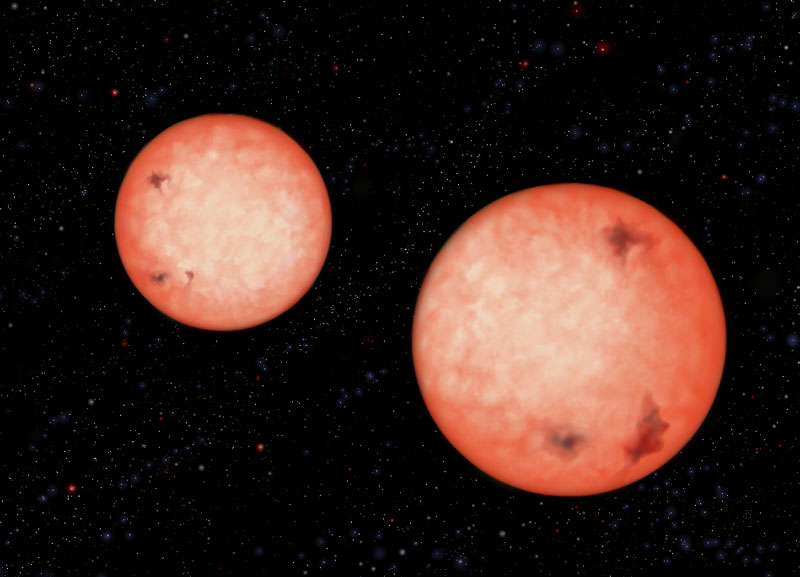Mysterious binary star systems
Astronomers have identified four binary systems with members that exist close to each other, contrary to the popular hypothesis in the scientific world.
>>>No sign of life at Gliese 581
While binary star systems exist quite commonly in the universe, scientists always assume that two members of a stellar system will quickly re-enter into one if they are too close.

An illustration of a red dwarf star system in near-impossible distance
The observed results over the past three decades have discovered countless binary star systems, but none have an orbital cycle shorter than 5 hours.
However, thanks to data obtained from the British Infrared Telescope in Hawaii (USA), a team of experts discovered by Mr. Bas Nefs of the Leiden Observatory (Netherlands) found four missing binary stars 4 hours to spin around each other, not to mention a star system takes only two and a half hours. This is something that is unlikely to happen in reality.
'That means we have to rethink the way the binary star systems form and develop,' according to UPI, quoted team leader Bas Nefs.
According to a report published in the Monthly Notices of the Royal Astronomical Society , scientists describe their subjects as red dwarf pairs, about 10 times smaller than the sun and 1,000 times less luminous.
Experts suggest that their strong magnetic lines can act as a win, restraining the rotation speed of the members and making them move closer together.
- Detecting super-fast star systems disrupts conventional physics theory
- Unique binary star system is extremely rare in the universe
- Does life exist in a binary star system?
- The giant red star revives 'zombie star' that confuses the researcher
- Discovery of the planet
- Discover strange binary star systems in the universe
- The star is brighter than the Sun.
- New hypothesis about a strange binary star system
- Discovered 'copy' of Uranus
- Detecting mysterious laser signals in the universe
- Three-star star system
- Death star bends light
 Van Allen's belt and evidence that the Apollo 11 mission to the Moon was myth
Van Allen's belt and evidence that the Apollo 11 mission to the Moon was myth The levels of civilization in the universe (Kardashev scale)
The levels of civilization in the universe (Kardashev scale) Today Mars, the sun and the Earth are aligned
Today Mars, the sun and the Earth are aligned The Amazon owner announced a secret plan to build a space base for thousands of people
The Amazon owner announced a secret plan to build a space base for thousands of people